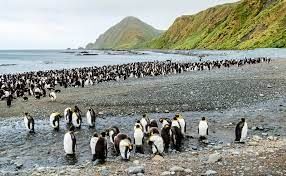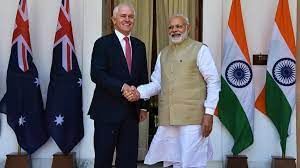UPSC Daily Current Affairs- 13th March 2023 | Current Affairs & Hindu Analysis: Daily, Weekly & Monthly PDF Download
GS-I
Landslide Atlas of India
Why in News?
Recently, ISRO released the Landslide Atlas of India.
About Landslide:-
- Landslide is a rapid movement of rock, soil, and vegetation down the slope under the influence of gravity.
- Landslides are caused due to three major factors: geology, morphology, and human activity.
Causes of landslide:-
- Rainfall and Snowfall- The occurrence of heavy or continuous rainfall may lead to heavy landslides in the areas of steep slopes where National Highways and roads have been constructed.
- Earthquakes and Volcanic Eruptions-Earthquakes are the most important cause of landslides in the folded mountainous areas. In India, Landslides are more frequent in the folded mountains of the Tertiary Period, like the Himalayas.
- Mining, Quarrying and Road cutting- The continuous extraction of coal, minerals, and stones from the mines and quarries and the development of roads by cutting the steep slopes in the folded mountains create conducive conditions for the occurrence of landslides.
- Loading by construction of houses- The unplanned growth of towns and cities in the hilly areas without testing soil and rocks in also an important cause of landslides.
- Deforestation- Deforestation and other human activities also induce landslides.
Landslide-Prone Areas in India:-
- Himalayan tract, hills/mountains in sub-Himalayan terrains of North-east India, Western Ghats, the Nilgiris in Tamil Nadu Konkan .
About Landslide Atlas of India:-
- It is a database of landslide-prone regions of India based on events during 1998 – 2022.
- It is created by the National Remote Sensing Centre, ISRO Department of Space, Government of India
- In addition to aerial images, high-resolution satellite images captured using ResourceSat-1 and 2, etc., were used to study the landslides.
- This Atlas provides the details of landslides present in Landslide provinces of India
- The database covers landslide-vulnerable regions in 17 states and 2 UTs of India in the Himalayas and Western Ghats.
- The database includes three types of landslide inventory – seasonal, event-based, and route-wise for the 1998-2022 period.
- The technology used: Satellite data of high to very high resolution such as IRS-1D PAN+LISS-III, Resourcesat-1, 2 and 2A LISS-IV Mx, Cartosat-1 and 2S, data from International satellites (Sentinel-1&2, Pleiades and WorldView) and Aerial images were used in the mapping of landslides.
- Vulnerability Ranking: The database was used to rank 147 districts in 17 states and 2 UTs of India for their exposure to landslides in terms of key socio-economic parameters.
Steps taken by the government:-
- The Geological Survey of India (GSI) has done a national landslide susceptibility mapping for 85% of the entire 4,20,000 square km landslide-prone area in the country.
- The areas have been divided into different zones according to the propensity of the disaster.
NDMA Guidelines for Landslides –
- Landslide Hazard, vulnerability and Risk Assessment
- Multi – Hazard Conceptualization
- Landslide Remediation practice
- Research and Development, monitoring, and early warning
- Knowledge network and management
- Capacity building and Training
- Public awareness and Education
- Emergency preparedness and response
- Regulation and Enforcement
Source: Indian Express
Macquarie Island

Why in News?
Recently, the Federal government of Australia proposed the expansion of the marine park covering Macquarie Island’s Economic Exclusion Zone.
About Macquarie Island:
- Macquarie Island is located around 1,500km southeast of Tasmania.
- It is the exposed crest of the 1,600 km-long undersea Macquarie Ridge.
- This is the only piece of land in the world formed entirely of oceanic crust.
- Macquarie Ridge is one of only 3 such ridges that impede the Antarctic Circumpolar Circulation.
- This results in distinct differences between the west and east sides of the ridge, which are used in different ways by different species.
- Fauna: It is home to 4 species of penguins and 4 species of albatross, the island recorded 57 seabird species.
- This Island and its surrounding seas are already protected as a Tasmanian reserve.
- The area is also designated as a World Heritage Area.
Source: Down To Earth
GS-II
Digital India Act, 2023
Why in News?
The Union government outlined the Digital India Act, 2023 which is a broad overhaul of the decades-old Information Technology Act, 2000.
Main objective of the Digital India Bill:
- The Digital India Bill aims to ensure that the internet in India is open, free from user harm and criminality and that there is an institutional mechanism of accountability.
- The legislation will cover emerging technologies, algorithms of social media platforms, artificial intelligence, and user risks, as well as the diversity of the internet and the regulation of intermediaries.
Provisions under Digital India Act 2023:
Freedom of Expression:
- Social media platforms’ own moderation policies may now be reduced to constitutional protections for freedom of expression and Fundamental speech rights.
- Recent amendment to the IT Rules, 2021 says that platforms must respect users’ free speech rights.
- Three Grievance Appellate Committees have now been established to take up content complaints by social media users.
- These are now likely to be subsumed into the Digital India Act.
Online Safety:
- The Act will cover Artificial Intelligence (AI), Deepfakes, cybercrime, competition issues among internet platforms, and data protection.
- The government put out a draft Digital Personal Data Protection Bill in 2022, which would be one of the four prongs of the Digital India Act, with the National Data Governance Policy and amendments to the Indian Penal Code being others, along with rules formulated under the Digital India Act.
New Adjudicatory Mechanism:
- A new “Adjudicatory Mechanism” for criminal and civil offenses committed online would come into place.
Safe Harbour:
- The government is reconsidering a key aspect of cyberspace — ‘safe harbour’, which is the principle that allows social media platforms to avoid liability for posts made by users.
- The term has been reined in recent years by regulations like the Information Technology (Intermediary Guidelines and Digital Media Ethics Code) Rules, 2021, which require platforms to take down posts when ordered to do so by the government, or when required by law.
Constitutional and legal Protection:
- Fundamental speech rights (Art 19) cannot be violated by any platform.
- However, social media platform’s own moderation policies may violate constitutional protections for freedom of expression.
- There is certainly a case that can be made that weaponization of disinformation is not the same as free speech, and that needs to be addressed.
- IT Rules, 2021: It says that platforms must respect users’ free speech rights.
- Three Grievance Appellate Committees have now been established to take up content complaints by social media users.
- Since the appellate committee portal’s launch, seventeen appeals have already been filed.
The need for a New Act:
- Since the IT Act of 2000 was enacted, there have been many revisions and amendments (IT Act Amendment of 2008, IT Rules 2011).
- However, because the IT Act was originally designed only to protect e-commerce transactions and define cybercrime offenses, it did not deal with the nuances of the current cybersecurity landscape adequately nor did it address data privacy rights.
- Without a complete replacement of the governing digital laws, the IT Act would fail to keep up with the growing sophistication and rate of cyber-attacks.
- The new Digital India Act also envisages to act as catalysts for Indian economy by enabling more innovation, more startups, and at the same time protecting the citizens of India in terms of safety, trust, and accountability.
Way forward
Regulation of hate speech and disinformation on the Internet is a must and intermediaries, including digital news media and social media platforms, have an accountable role to play.
Currently, there are more than 760 million internet users in the country and this is to touch 1.2 billion in coming years. Though the internet is good and aids in connectivity, there are several user harms around it. Therefore, it is essential to bring in laws that will provide new frames on the rights and duties of the citizens and also speaks about the obligation to collect data.
Source: Indian Express
India-Australia Relations

Why in News?
The Australian Prime Minister (PM) on his visit, India and Australia signed an Audio-visual co-production agreement. The two Prime Ministers also discussed a range of domains to improve India-Australia relations.
Key highlights of the visit:
- Australia wants to work with India and build a relationship in the areas of culture, economics, and security.
- Both countries signed memorandums of understanding (MoUs) for sports and audio-visual co-production agreements, and they also talked about the terms of reference for the Solar Taskforce between India and Australia.
- India was worried about the damage done to Hindu temples in Australia by people who support the Khalistan government.
- In reply, Australia agreed to protect and keep safe the Indian community in Australia.
Bilateral relations:
Historical Perspective:
- Australia and India for the first time established diplomatic relations in the pre-Independence period, when the Consulate General of India was first opened as a Trade Office in Sydney in 1941.
- India-Australia relations touched a historic low when the Australian Government condemned India’s 1998 nuclear tests.
- In 2014, Australia signed a Uranium supply deal with India, the first of its kind with a country that is a non-signatory to the Nuclear Non-Proliferation Treaty, in recognition of India’s “impeccable” non-proliferation record.
Bilateral Trade:
- India is the 5th largest trade partner of Australia with trade in goods and services at A$ 29 billion representing 3.6% share of the total Australian trade in 2017-18, with export at A$ 8 billion and import at A$ 21 billion.
Defence:
- AUSINDEX: The first-ever Bilateral Maritime Exercise, AUSINDEX, was conducted in Visakhapatnam (Bay of Bengal) in September 2015.
- Exercise Pitch Black: In 2018, the Indian Air Force participated for the first time in the Exercise Pitch Black in Australia.
- Exercise of the Australian Navy: INS Sahyadri participated in Kakadu, the biennial exercise of the Australian Navy held in 2018, in which 27 nations participated.
- AUSTRAHIND: The 4th edition of AUSTRAHIND (Special Forces of Army Exercise) was held in recently.
- Joint military exercises: In 2023, India, Japan, and the US will all take part in the “Malabar” exercises, which will be held in Australia.
- India has been invited to join the Talisman Sabre exercises in 2023.
Multilateral Cooperation:
- Both are members of the Quad, Commonwealth, Indian Ocean Rim Association (IORA), ASEAN Regional Forum, Asia Pacific Partnership on Climate and Clean Development, and have participated in the East Asia Summits.
- Both countries have also been cooperating as members of the Five Interested Parties (FIP) in the World Trade Organization context.
- Australia is an important player in Asia Pacific Economic Cooperation (APEC) and supports India’s membership of the organisation.
Cooperation on Clean Energy:
- In February 2022, countries signed a Letter of Intent on New and Renewable Energy for cooperation to reduce the cost of renewable energy technologies, including ultra low-cost solar and clean hydrogen.
- India announced Australian Dollars(AUD) 10 million for Pacific Island Countries under the International Solar Alliance (ISA).
- Both the countries committed to USD 5.8 million to the three-year India-Australia Critical Minerals Investment Partnership.
Indian Diaspora:
- The Indian community in Australia continues to grow in size and importance, with a population of nearly half seven lakhs.
- India is now the third-largest source of immigrants to Australia, after the UK and New Zealand and the largest source of skilled professionals for Australia.
- There is a constant flow of students and tourists from India.
Challenges in India-Australia Relations:
- China’s Discontent: China is unhappy with the growing security cooperation between Australia and India.
- The Chinese government responded to the Quadrilateral dialogue by issuing formal diplomatic protests to its members, calling it “Asian NATO”.
- India’s stand on the Russia-Ukraine crisis: Australia has criticized the Russian invasion of Ukraine and sided with the U.S. and western countries.
- However, India has refrained from criticizing Russia over the issue. This can create differences in bilateral discourse and the functioning of QUAD.
- Coal mine controversy: There was controversy over the Adani coal mine project in Australia, with some activists protesting against it, which created a strain in the relationship between the two countries.
- Visa issues: There have been concerns over visa restrictions for Indian students and professionals seeking to work in Australia.
- No Free Trade Agreement: Both nations have been interacting and communicating with each other for decades but have failed to create a consensus on a Free trade agreement.
- Lack of Uranium Supply: The progress on uranium supply has been very low, despite efforts from both sides. In 2017, Australia had sent its first uranium shipment to India but that was cited as “a small sample of uranium” transferred “purely for testing purposes”.
- Violence with Indian Diaspora: Attacks on Indian Diaspora and temples in the recent past by Khalistan supporters have been an issue of strain.
Way Forward:
On the whole, The India–Australia strategic partnership has seen impressive advancements in the last few years, but its potential and promise are yet to be fully realised. Hence, the need of dedicated attention and political leadership from both capitals to become more than a work in progress going forward.
Source: Indian Express
GS-III
Adenovirus

Why in News?
Amid the two deaths recorded in Karnataka and Haryana due to the Influenza A subtype H3N2 virus, its rapid spread across India has been a cause of concern. But experts say that much of the spread has got to do with atmospheric pollution.
About Adenovirus :-
- The adenoviruses are common pathogens of humans and animals.
- Adenovirus causes wide variety of illness in humans ranging from gastrointestinal infections to common cold.
- The main target for adenoviruses in humans is the respiratory tract.
- Adenovirus are a common cause of viral infections in all age groups.
- There are more than 50 types of adenoviruses that can cause disease in humans.
- Adenovirus is a double-stranded DNA virus .
- Adenoviruses can be transmitted from one infected person to another through physical contact,coughing and sneezing or touching a contaminated object or surface.
- The disease can also be caused by contaminated water or through an infected person’s faeces.
Common symptoms: –
- Respiratory (cough, fever, fast breathing, wheezing, sore throat)
- Pneumonia
- Diarrhea amog others.
Source: Indian Express
What is Terran 1 Rocket?

Why in News?
The launch of the world's first 3D-printed rocket, Terran 1, was recently canceled at the last second.
About Terran 1 Rocket:
- It is the world’s first 3D-printed rocket.
- It is built by California aerospace startup Relativity Space.
- Features:
- The rocket is 110 feet (33.5 meters) tall with a diameter of 7.5 feet (2.2 meters) .
- Eighty-five percent of its mass is 3D printed with metal alloys, including the engines.
- It is powered by Aeon engines using liquid oxygen and liquid natural gas as propellants.
- It has nine 3D-printed Aeon 1 engines in its first stage and one 3D-printed Aeon Vacuum engine in its second stage.
- The rocket will eventually be capable of putting up to 2,755 pounds (1,250 kilograms) into low Earth orbit.
What is 3D Printing?
- 3D printing or additive manufacturing is a process of making three-dimensional solid objects from a digital file.
- The creation of a 3D printed object is achieved using additive processes.
- In an additive process, an object is created by laying down successive layers of material until the object is created. Each of these layers can be seen as a thinly sliced cross-section of the object.
- 3D printing enables you to produce complex shapes using less material than traditional manufacturing methods.
Source: Indian Express
Types of Diabetes

Why in News?
Researchers at Vanderbilt University Medical Center have now learned from a study that the primary cause of a noticeably smaller pancreas in persons with Type 1 diabetes is insulin shortage.
What is Diabetes?
- Diabetes is a chronic disease that occurs when the pancreas can no longer make insulin, or the body cannot make good use of the insulin it produces.
- Insulin is a hormone that regulates blood glucose.
- Not being able to produce or use insulin effectively leads to raised glucose levels in the blood, known as hyperglycaemia.
- Over the long-term high glucose levels are associated with damage to the body and failure of various organs and tissues.
- Diabetes is a major cause of blindness, kidney failure, heart attacks, stroke, and lower limb amputation.
Types of Diabetes:
- Type 1 diabetes:
- It is a condition in which your immune system destroys insulin-making cells in your pancreas. These are called beta cells.
- When you have type 1 diabetes, your body produces very little or no insulin.
- It requires daily administration of insulin to maintain blood glucose levels under control.
- It is usually diagnosed in children and young people, so it used to be called juvenile diabetes.
- Symptoms include excessive excretion of urine (polyuria), thirst (polydipsia), constant hunger, weight loss, vision changes, and fatigue.
- Type 2 diabetes:
- It results from the body’s ineffective use of insulin that it produces.
- More than 95% of people with diabetes have type 2 diabetes.
- This type of diabetes is largely the result of excess body weight and physical inactivity.
- Symptoms may be similar to those of type 1 diabetes but are often less marked. As a result, the disease may be diagnosed several years after onset.
- Gestational diabetes (GDM):
- It is a type of diabetes that consists of high blood glucose during pregnancy and is associated with complications for both mother and child.
- GDM usually disappears after pregnancy, but women affected, and their children are at increased risk of developing type 2 diabetes later in life.
Source: Economic Times
|
38 videos|5293 docs|1118 tests
|
FAQs on UPSC Daily Current Affairs- 13th March 2023 - Current Affairs & Hindu Analysis: Daily, Weekly & Monthly
| 1. What are the three stages of the UPSC exam? |  |
| 2. What does GS-I, GS-II, and GS-III refer to in the UPSC exam? |  |
| 3. How important is the GS-II paper in the UPSC exam? |  |
| 4. What subjects are covered in the GS-III paper of the UPSC exam? |  |
| 5. How can I prepare for the GS-I, GS-II, and GS-III papers of the UPSC exam? |  |


















